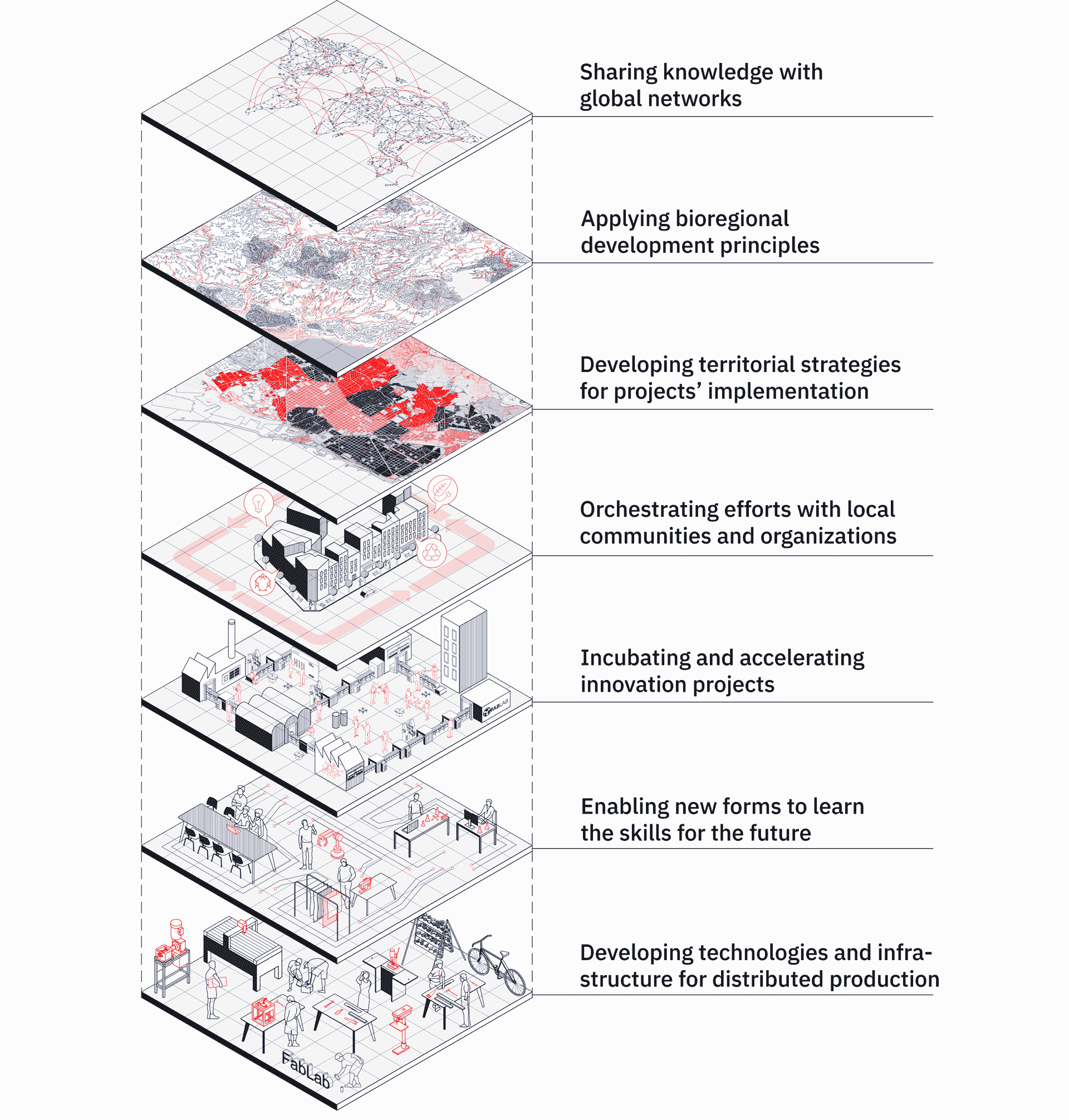How does the transformation of cities into Fab Cities succeed? The full-stack model identifies and connects six levels from networked neighborhoods to the network of cities to create a new kind of ecosystem for local production.
What is the Fab City Full Stack?
The Fab City Global Initiative (FCGI) is a global network that aims to transform communities, societies and ecosystems into distributed networks of hyperlocal production systems that enable the mass distribution of goods and resources on a global scale. This logic is referred to as PITO (Product-In-Trash-Out) to DIDO (Data-In-Data-Out). FCGI is based on the idea that fab labs can potentially manufacture anything locally.
This paradigm shift is supported by a multi-scale framework that identifies key infrastructures and actors at different levels of the urban ecosystem. This framework is called the “Fab City Full Stack” and aims to enable the re-localization of manufacturing in cities and the deployment of digital manufacturing technologies at seven different levels.

The seven layers
The Fab City Full Stack layers are not necessarily in any particular order, but reading them from the bottom up makes them easier to understand.
Layer 1
Developing Infrastructure and Technologies for Local Production
This layer refers to the necessary infrastructure on the local level, such as innovation spaces (e.g., Fab Labs, makerspaces, hackerspaces, creative hubs, etc.), as well as the core technologies (e.g., digital fabrication tools, new materials, etc.) that could nourish a sustainable transition towards a new productive model. In addition, this layer aims at building a sense of community around such spaces with shared values such as openness, inclusivity, and sharing.
Layer 2
Enabling New Forms of Learning
By incorporating digital fabrication tools, principles, machines, and processes in existing formal education and creating new programs, new forms to learn the skills for the future are enabled. This layer facilitates a transition to educational models that foster the development of creative and critical skills at all levels.
Layer 3
Incubating Value-Generating Projects
This layer focuses on nurturing social and entrepreneurial projects that may have an economic, scientific, and social impact at the local scale and contribute to transforming the existing productive paradigm at multiple scales. It also includes frameworks, methods and business models that support the development and utilization of such innovation projects.
Layer 4
Orchestrating Efforts between Local Communities and Initiatives
Layer 4 recognizes the need to develop networks between local communities and initiatives based on the Fab City values and goals. It seeks to articulate existing local efforts and incentivize the active participation of the local communities in innovation projects, which could impact their local context. Fab City Hubs are an illustrative example, acting as physical interfaces to connect multiple local actors and foster collaboration in a given territory.
Layer 5
Prototyping Place-Based Interventions
To connect the projects coming out of the Fab Labs and Fab City Hubs closely with their local ecosystem, it’s important to prototype the Fab City model on various scales, such as a neighborhood or the city itself. The objective is to create local strategies and governance models, and influence policy-making to develop a favorable legal framework for implementing Fab City projects.
Layer 6
Applying Bioregional Strategies
A bioregional approach to the transition towards a new productive model can help improve the relationship humans have with other species. Bioregions are defined by cultural relationships, and natural systems in each territory. They allow us to understand cities beyond their physical, or political limits but also operate within a global logic, such as changes in climate. Spatial interventions need to recognize such multi-species approaches.
Layer 7
Sharing Knowledge with Global Networks Enabling the mechanisms to share knowledge between local and global networks is fundamental, as it is key to understanding the transition from PITO to DIDO. Knowledge exchange is produced in the local contexts, which happens in Fab labs, hubs, neighborhoods, or bioregions, and is also shared globally through the internet. It also contemplates the need to develop metrics to measure progress for cities to produce (almost) everything they consume before 2054.
More about the Full Stack Modell